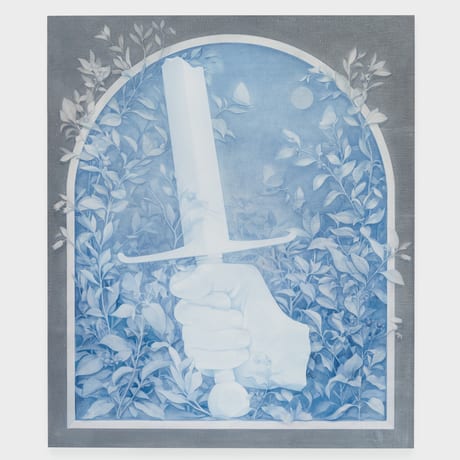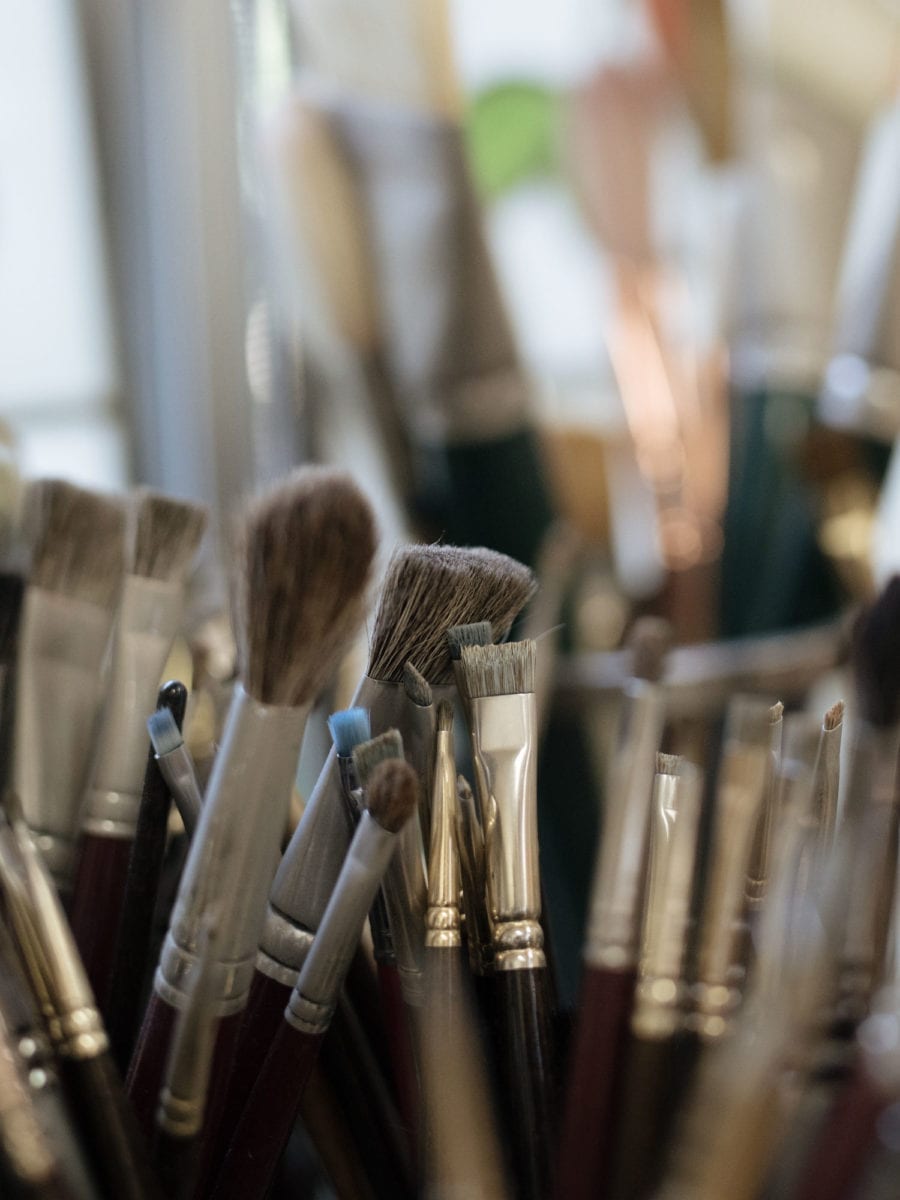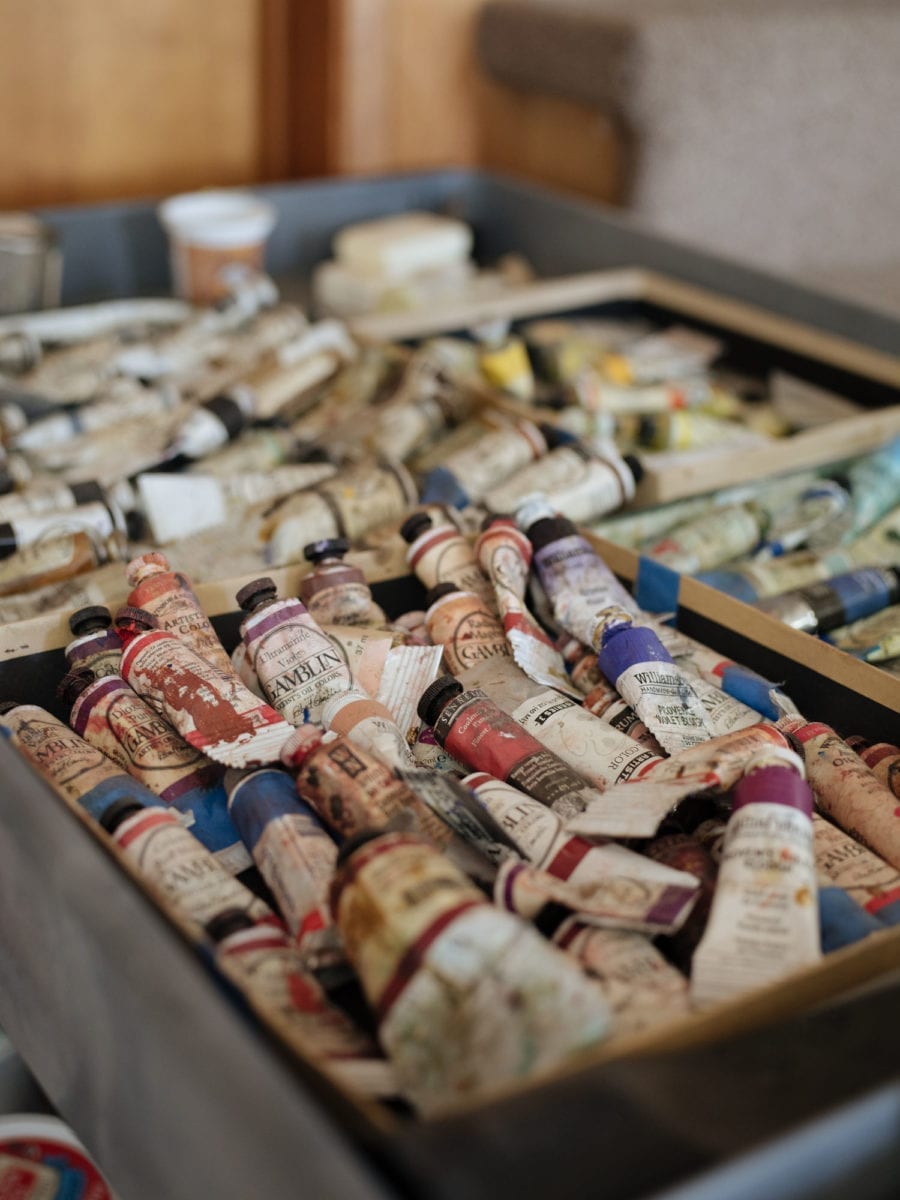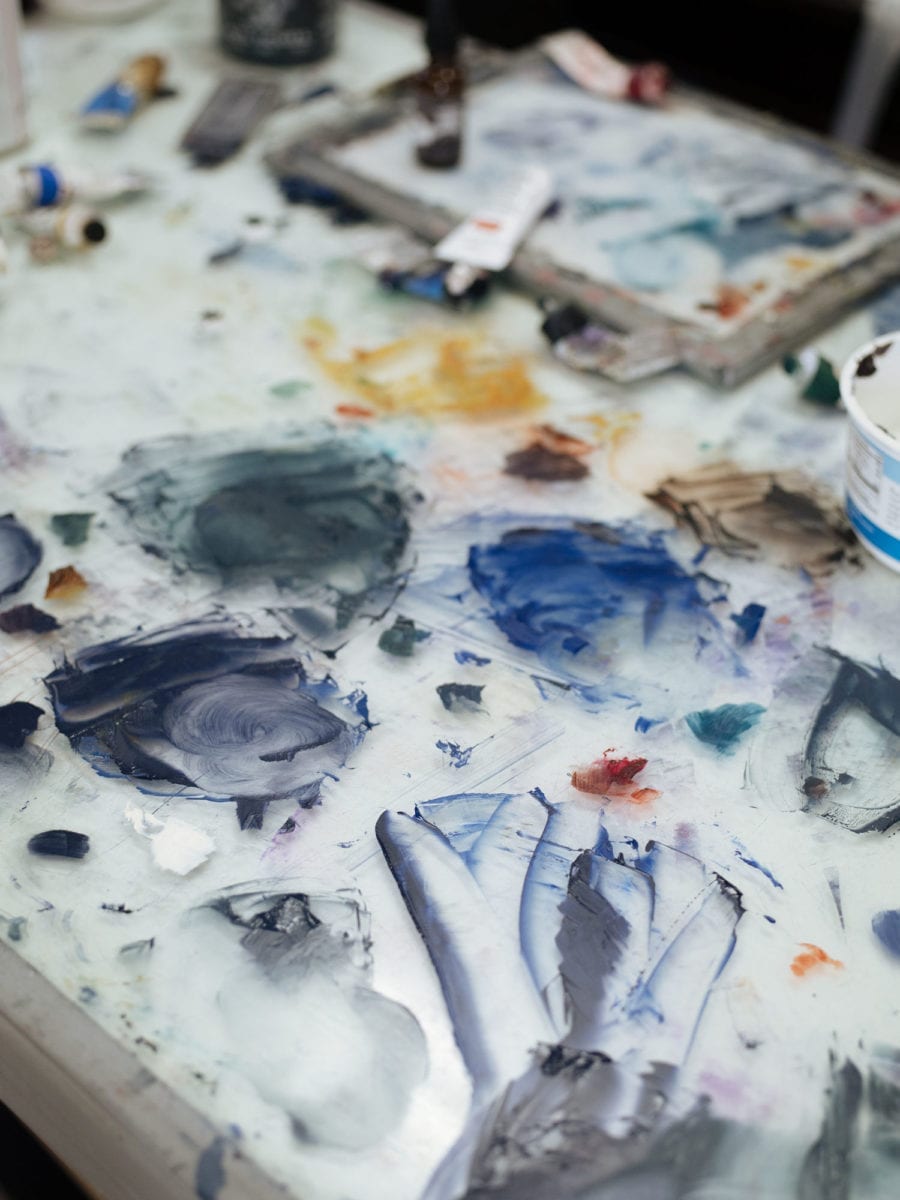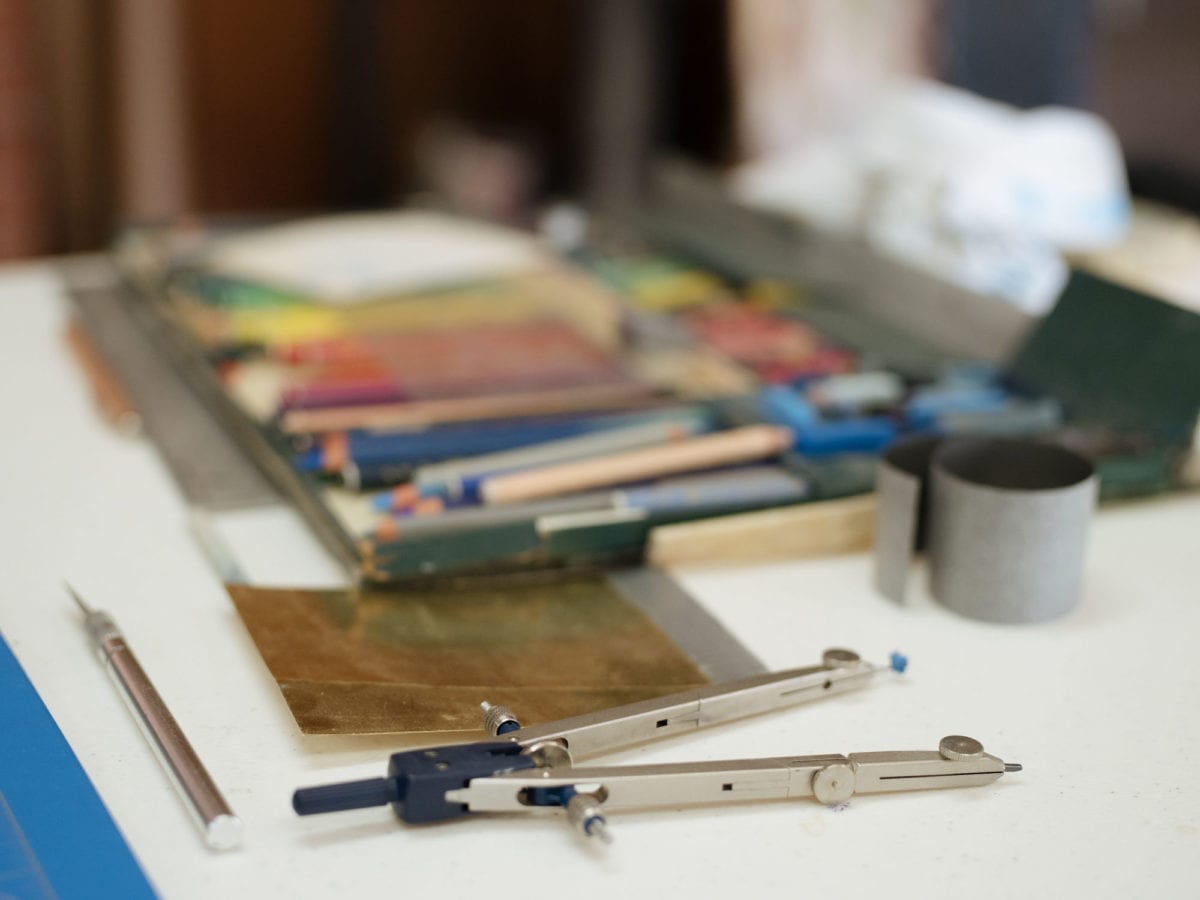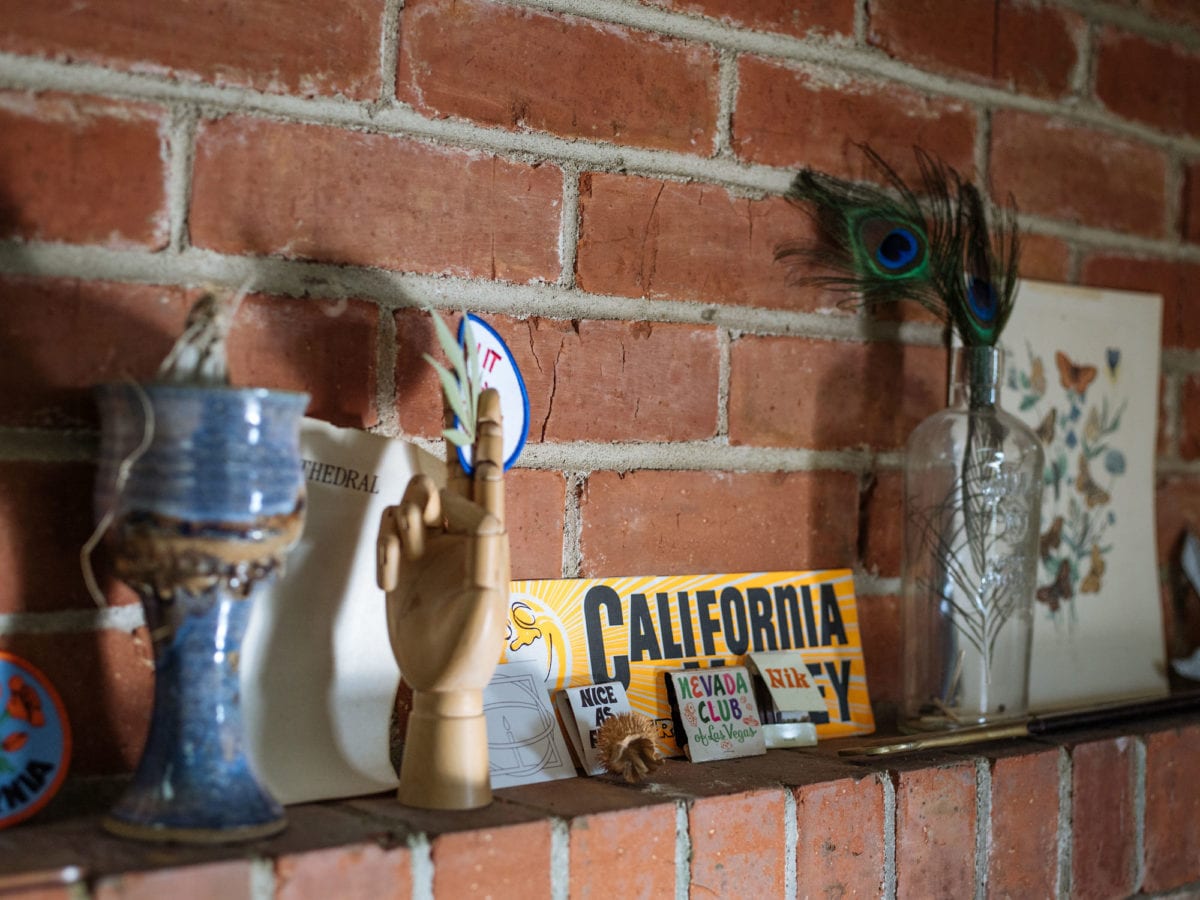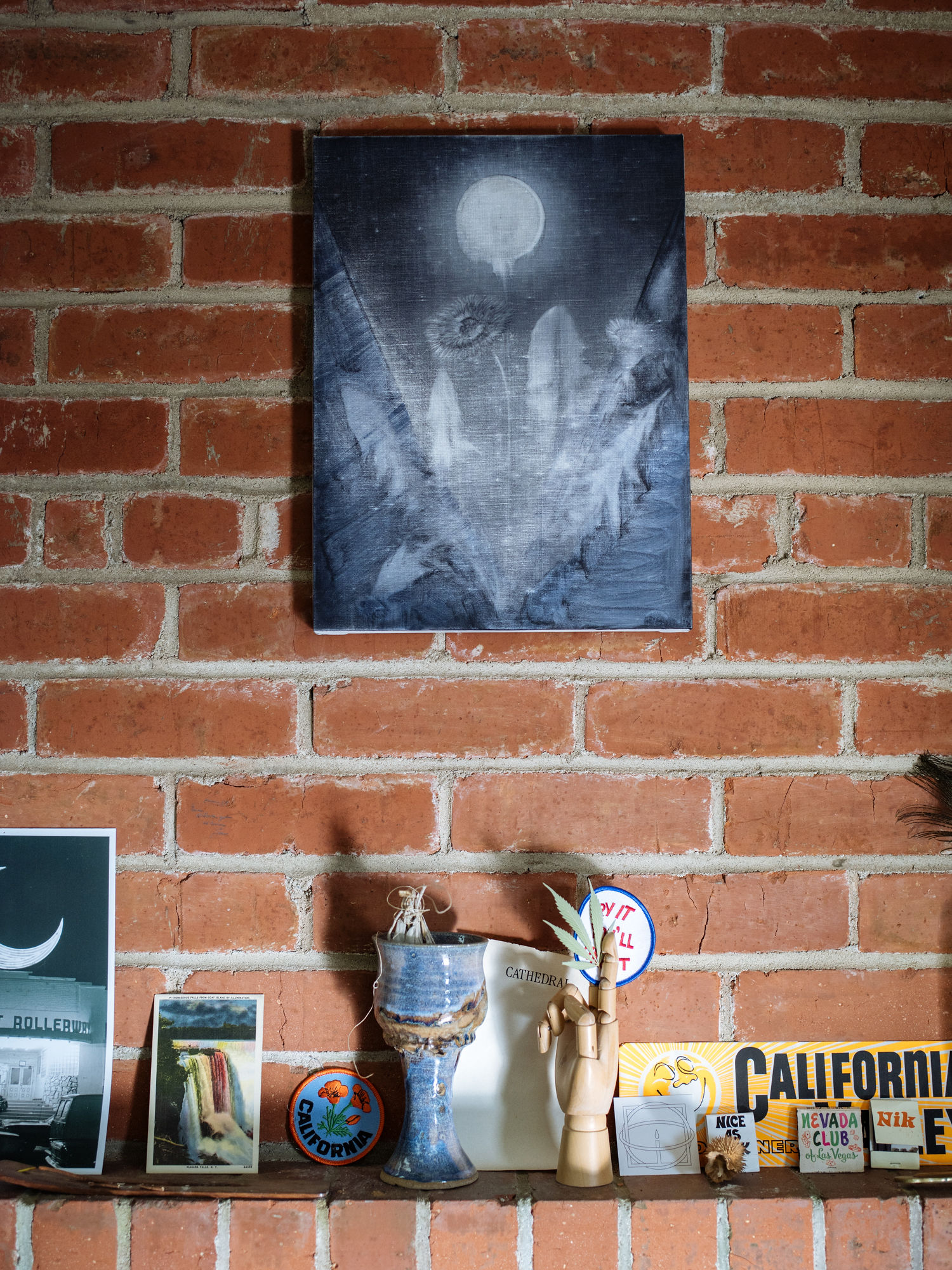
A shield for protection; a cup to replenish; a weapon to fight. These allegorical symbols are at the centre of artist Theodora Allen’s recent work and debut New York solo exhibition, weald, on show now at Kasmin Gallery. Part landscape, part mind-scape, Allen’s otherworldly oil paintings evoke that twilight state of consciousness between waking and dreaming with her use of archetypal imagery and lush, psychotropic plant life. I visit Allen at her studio tucked away against the sunny hillsides of northeast Los Angeles, where we talk about her creative process and why the white noise that comes from living by the freeway actually sounds like the ocean, when you think about it.
You were born and raised in LA. Has that environment impacted the way you approach your work?
I think definitely the quality of light has a major influence that runs through my work, since my paintings focus on revealing that light source through layers of sheer colour without the use of applied white. But I feel like the California sunshine affects everybody’s experience of this city: even just in the sun-bleached quality of posters and books that you see in the windows of shops, or in the way the city’s been recorded through photography, there’s a certain light that’s in everything.
“I’m inspired by weeds and wildflowers, things that aren’t necessarily rarefied plants”

Botanical elements are a recurring theme in your work. Is access to nature important to you for inspiration, or are these purely imagined landscapes of the mind?
I think it’s both. One of the amazing things about living in LA is that you can be in a city and then in ten minutes be in a canyon or be by the ocean. A lot of the imagery for these paintings came out of the research I was doing at the Arboretum’s Botanical Library.
There’s always a period before I start working where I just spend time gathering information and imagery and mapping everything out. I’m inspired by weeds and wildflowers, things that aren’t necessarily rarefied plants. You’ll see them growing in your backyard or on the side of a freeway overpass. There’s an accessibility and a sense of the ordinary in a lot of these plants; however, for this upcoming show I chose to focus on plants from around the world that transcend the commonplace in their use as remedies and aphrodisiacs and sacraments.
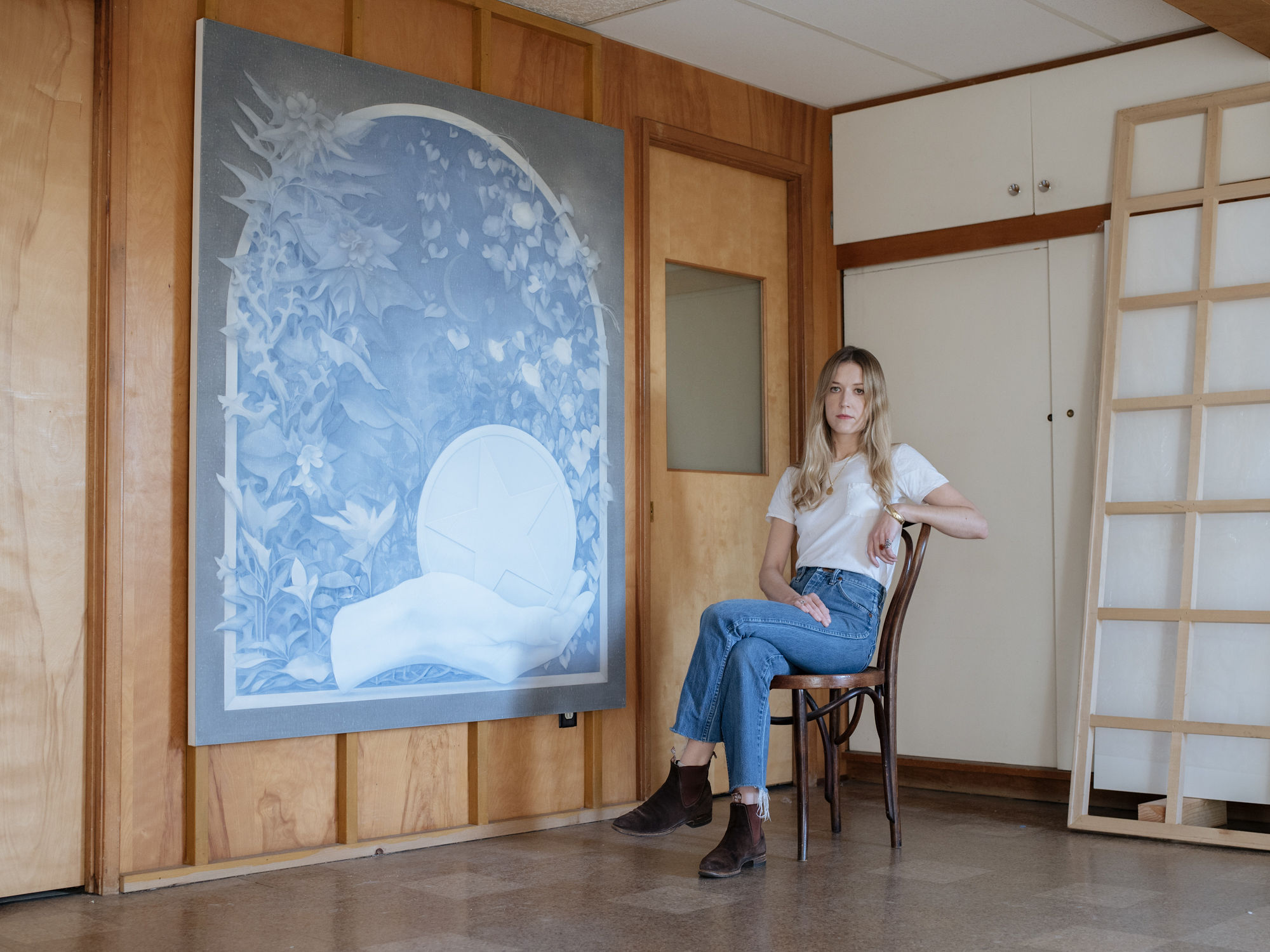
Tell us a little bit about your studio space and neighbourhood—how do your physical surroundings influence your process?
I found a very industrial space to work in right out of grad school but it never really felt like the right environment for me. So after a year of being there I started looking for a more domestic space where I could live and work. I found a small mid-century home here in Pasadena. It’s tiny but it has a lower level with an open floor plan and a lot of natural light. There’s not a lot of wall space though, so right before a show it becomes an extremely dense, salon-style workspace.
What is it like living and working in such a suburban part of the city?
It’s a very peaceful place to call home. My street is very quiet, and my neighbours are mostly older retired people. The house is situated at the top of the hill so I can sit out on my balcony and get an amazing view of the city. Pasadena is strange in that it feels far away from things but also still part of the world. Maybe it’s the fact that the freeway is so nearby. At first it really bothered me but I actually feel like I’ve come to appreciate it being there; it feels quintessentially LA that within all its disparate communities the freeways are what connects to the rest of the city. When I first moved in I was complaining about the constant white noise of the cars to a friend, but she said “Just pretend it’s the ocean.” That really changed my perspective!
What’s the physical process of achieving that ethereal quality in your paintings like?
For this show I took a slightly different approach from my usual process. I started with pools of watercolour and just left the pigments where they naturally wanted to run to the edges of the canvas, so when they dried it would leave this organic, watery stain. When applying oil to watercolour there’s a material resistance, which isn’t easy to control and it brings an elemental quality to the work. The linen that I paint on then becomes very atmospheric, almost like a twinkling, celestial sky.
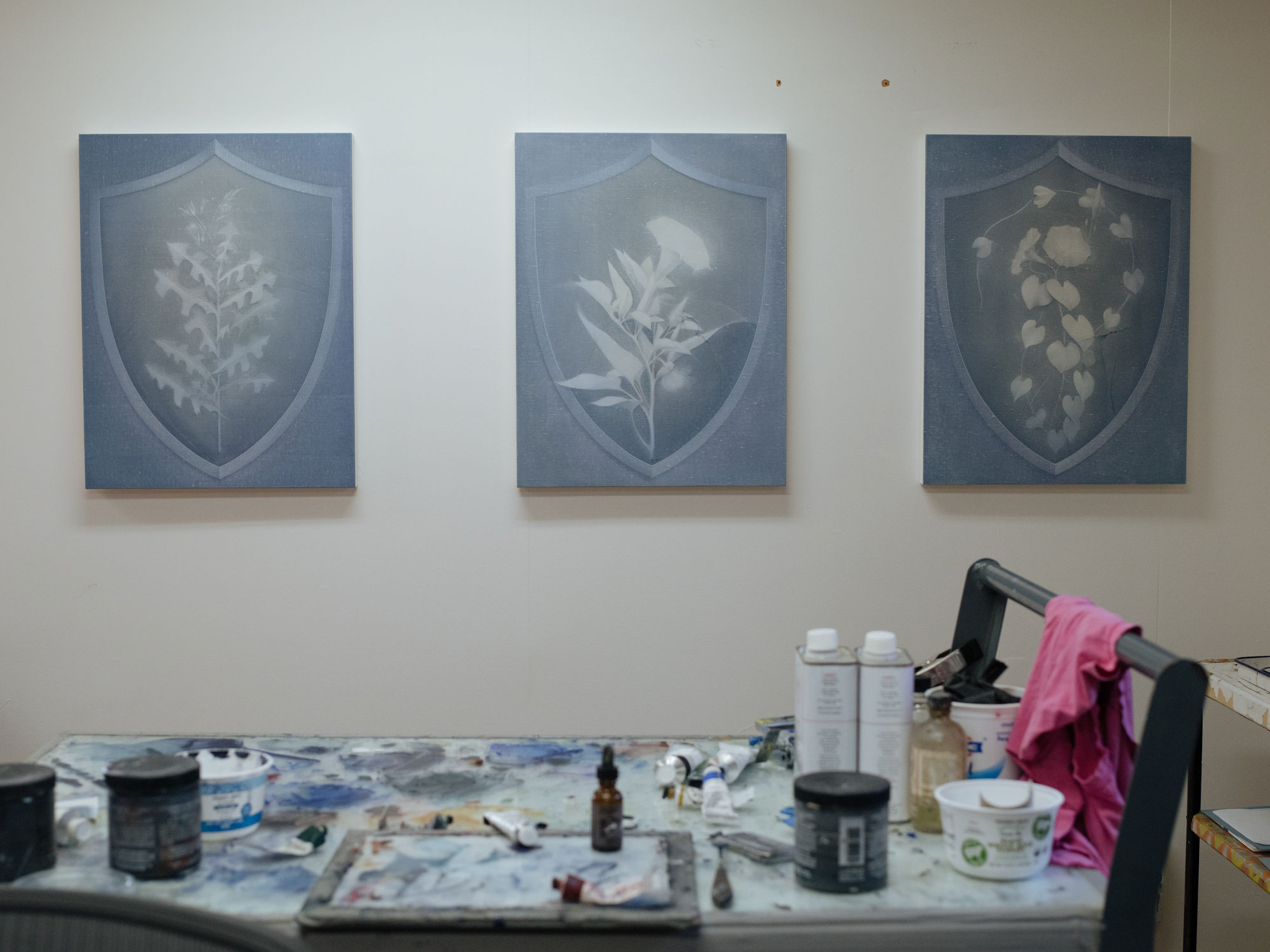
Another part of the process involved putting down very fine layers of oil paint and then wiping it away before it dried and so you get almost a ghost image in the texture of the linen. It’s something that I developed just through trial and error but it started out because I was making a lot of painting experiments and not wanting to ever just leave things as is, so there was a lot of wiping away and painting into previous layers, allowing traces of those former images to get left behind. And then I just found that it really resonated with a lot of the themes I was exploring, and it was interesting to see the physical evidence of making and removing and the process of time.
“While the language is of the past, these symbols are still relevant to us today”
What was the inspiration for the new series in your current show?
The show is divided into two bodies of work: Shields (dwale) and Monuments (weald). In terms of research, I came across the term “dwale”, which in old Norse means sleep or trance, and in the Middle Ages it was the term given to one of the first widely used anaesthetics, which is made out of opium, poppy, henbane and devilry nightshade, all of which are the plants that I feature in these paintings.
Dwale is also and anagram for weald, an Old English term for forest. I’ve always been interested in archaic terms. So these two words seemed to perfectly locate the work in dual form, one as landscape the other as mind-scape. But I think there’s an essential or timeless feeling to the work that transcends that notion of archaic. While the language is of the past, these symbols are still relevant to us today. They were actually taken from a card game that was used in the Middle Ages, one that would develop into the Tarot. It was used less as a form of divination and more as a way for describing the various aspects of earthly existence and the human condition. So much of my work draws from from myth and fairytales, and often the struggle in these stories is that you’re fighting against a sort of predetermined course for yourself, similarly with the Tarot. I approach it from a much more of a Humanist perspective, that it’s more of a belief in your own choices rather than these predetermined trajectories. However, the position that I want to convey in my work is that it still supports this almost universal idea of the search and our desire as human beings to know what lies ahead.
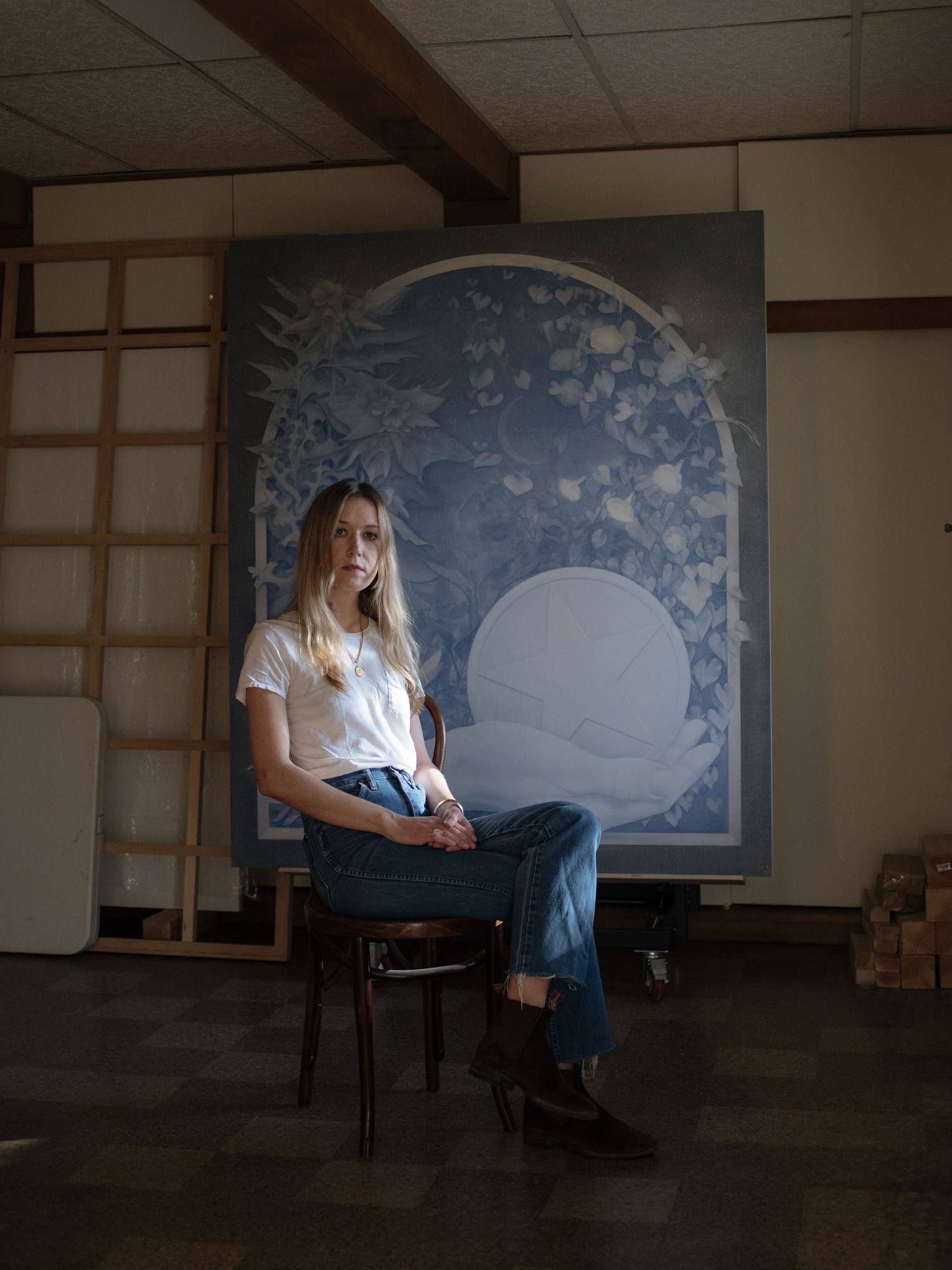
Photography by Max Knight
